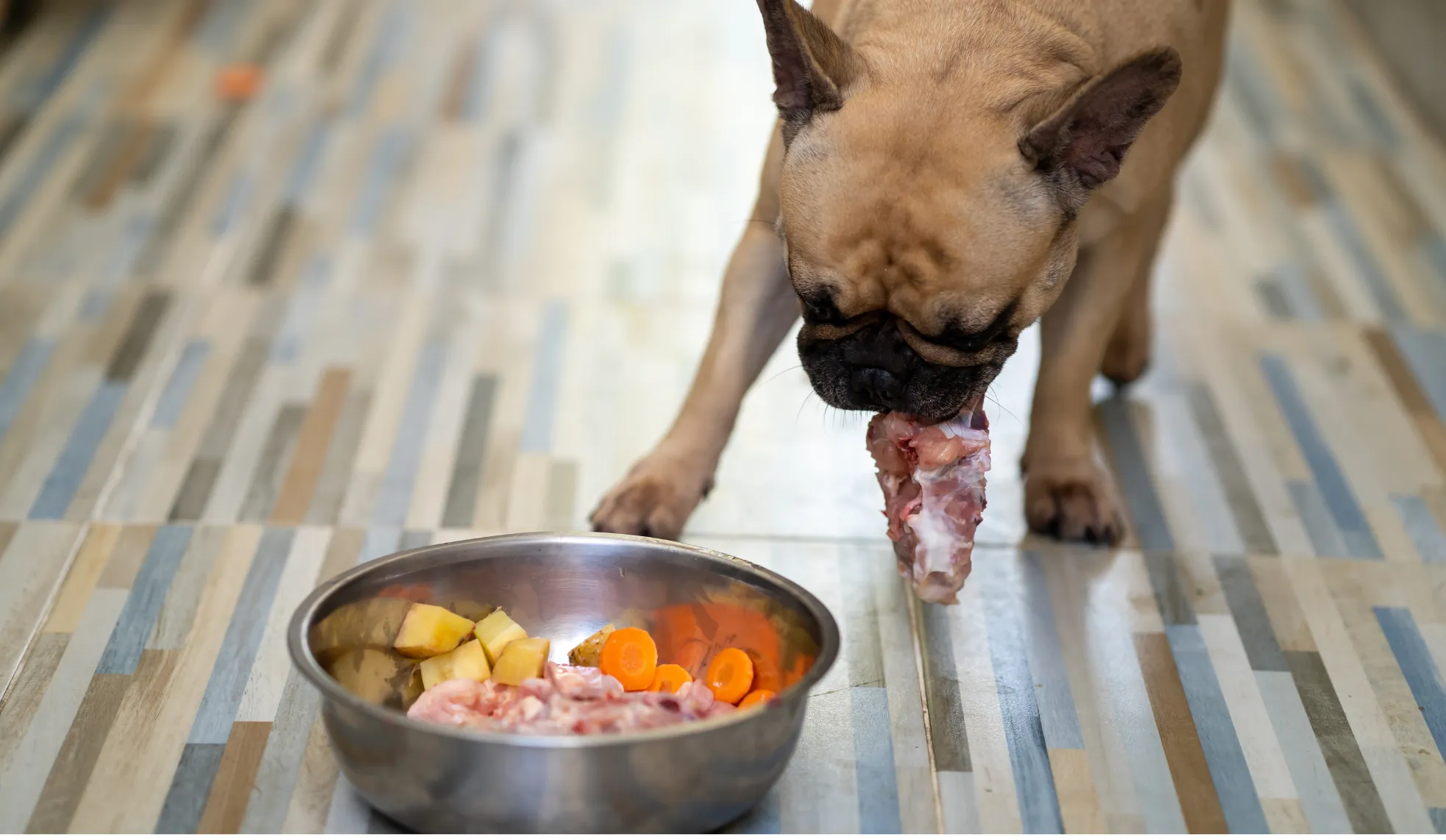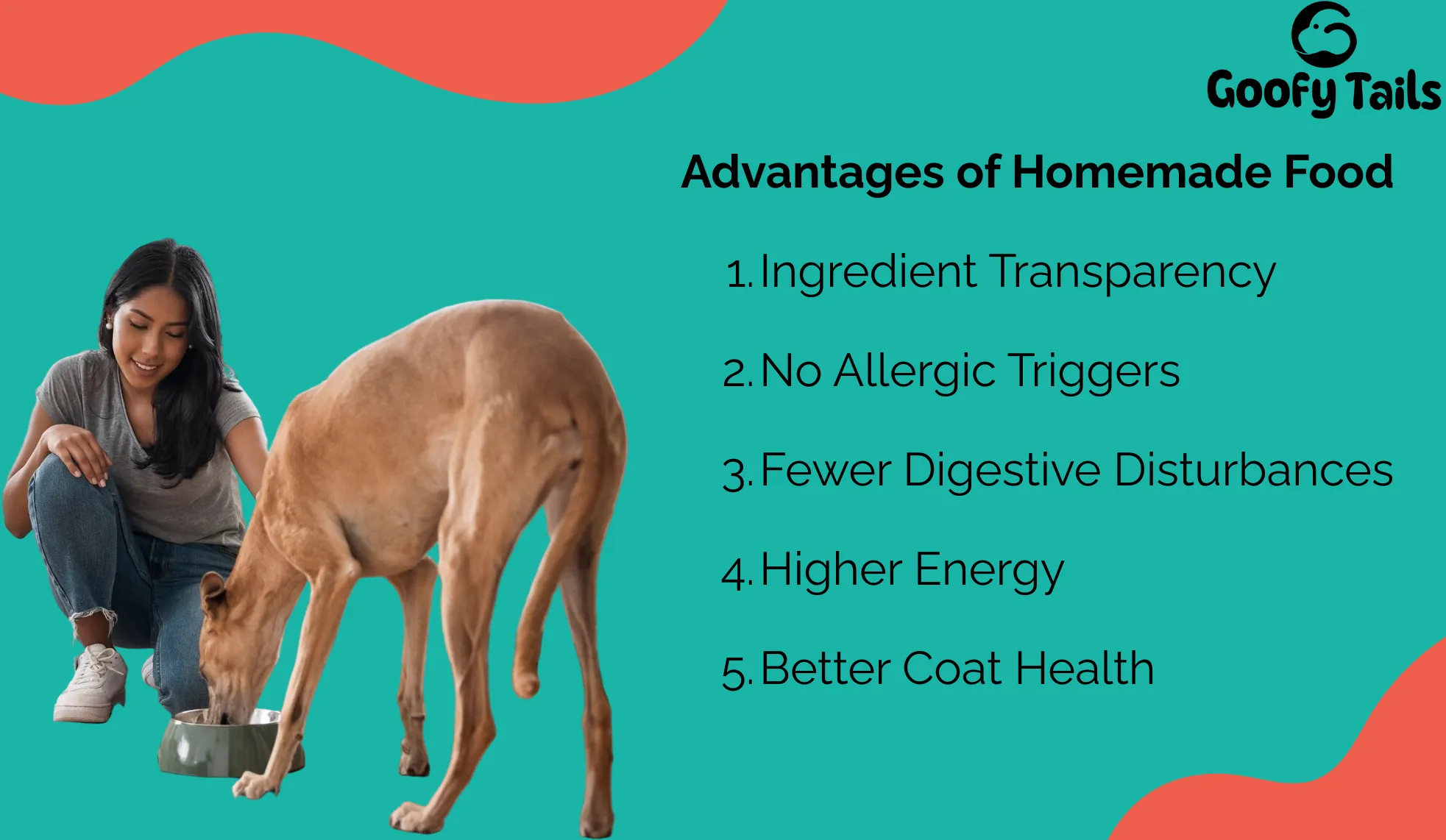For devoted pet parents, providing the best nutrition for their furry companions is a top priority. The growing trend of homemade grain-free dog food recipes, especially those that are vet-approved, reflects a desire for greater control over ingredients, improved digestibility, and the avoidance of common fillers or potential allergens. While the concept of crafting your dog’s meals at home might seem daunting, with the right knowledge and veterinary guidance, it can be a rewarding way to support your dog’s overall health and well-being. This comprehensive guide will walk you through the essential components, benefits, and critical safety considerations for creating nutritious, grain-free meals for your canine friend. Finding the right balance is key, and understanding how to [make your own dog food recipe](https://dogcarestory.com/make-your-own-dog-food-recipe/) can be immensely beneficial for your pet’s health.
Making homemade grain-free meals offers several advantages, including better energy levels, a healthier coat, fewer digestive upsets, and reduced allergic reactions for sensitive dogs. It also provides complete transparency regarding what goes into your dog’s bowl. However, it’s crucial to understand that simply combining meat and vegetables isn’t enough. A truly beneficial homemade diet, particularly a grain-free one, demands a precise balance of protein, fat, fiber, and essential micronutrients. This is where the “vet-approved” aspect becomes paramount, ensuring your chosen homemade grain free dog food recipes meet all your dog’s nutritional requirements without grains.
Why Choose Vet-Approved Homemade Grain-Free Dog Food?
Opting for homemade grain-free dog food, especially with the guidance of a veterinarian, brings numerous scientifically backed benefits to your dog’s diet. While true grain allergies are less common than often perceived, certain dogs with digestive sensitivities or skin issues may thrive on a diet free from common grains such as wheat, corn, or soy. This approach to feeding is not just about eliminating ingredients; it’s about optimizing nutrition.
One significant advantage is reduced potential allergens. For dogs with specific sensitivities, removing common grains can lead to a noticeable improvement in their overall comfort and health. Furthermore, grain-free diets often emphasize whole meats, healthy fats, and low-glycemic vegetables, which are typically easier on a dog’s digestive system, leading to improved digestibility. This can result in fewer gastrointestinal upsets and better nutrient absorption.
Another key benefit is a lower glycemic load. Without high-carbohydrate grains, your dog’s energy release becomes slower and more sustained, which is particularly advantageous for dogs managing their weight or those with insulin resistance. Finally, both homemade and commercial grain-free options tend to feature cleaner ingredient lists, avoiding unnecessary fillers and artificial additives that offer little nutritional value. Ensuring these benefits are realized safely means working closely with a veterinary professional to ensure your [homemade dog food recipes vet approved turkey](https://dogcarestory.com/homemade-dog-food-recipes-vet-approved-turkey/) or other protein sources are genuinely balanced.
 A happy pug enjoys a fresh, homemade grain-free meal prepared with care.
A happy pug enjoys a fresh, homemade grain-free meal prepared with care.
Essential Components of a Vet-Approved Grain-Free Meal
Creating balanced homemade grain free dog food recipes requires careful consideration of each ingredient category. A well-rounded, vet-approved recipe typically consists of high-quality protein, digestible vegetables for fiber and micronutrients, healthy fats, and crucial calcium and mineral support. Each component plays a vital role in your dog’s health.
High-Quality Protein (35–45% of Meal)
Protein is the cornerstone of any healthy dog diet, essential for robust muscle development, immune system function, and tissue repair. When preparing homemade meals, focus on lean, easily digestible protein sources.
Suggested Protein Options:
- Chicken Thigh (boneless, skinless): A lean, highly digestible source rich in amino acids.
- Lamb or Mutton: Excellent sources of B vitamins and iron.
- Buffalo Meat (lean cuts): A hypoallergenic red meat option for dogs with sensitivities.
- Eggs: A complete protein powerhouse, also providing biotin and selenium.
- Fish (e.g., mackerel, sardines): Abundant in omega-3 fatty acids, vital for skin, coat, and heart health.
- Organ Meats (e.g., liver, kidney, heart): Nutrient-dense superfoods, but should be fed in moderation, comprising no more than 5–10% of the meal due to their high vitamin content.
For safety and digestibility, all protein should be lightly cooked or boiled. Never serve raw meat unless under strict professional guidance from a veterinary nutritionist, as improper raw feeding carries significant risks of bacterial contamination and nutritional imbalances.
Vegetables for Fiber, Micronutrients & Satiety (30–40%)
Non-starchy, easily digestible vegetables are crucial for providing fiber, essential vitamins, minerals, and antioxidants without adding unnecessary carbohydrates. Avoid high-starch options like sweet potatoes in a strictly grain-free plan, especially if your dog has specific dietary needs like managing [homemade food for dogs with liver disease](https://dogcarestory.com/homemade-food-for-dogs-with-liver-disease/).
Recommended Vegetables:
- Pumpkin: Excellent for gut health, offering soothing fiber and beneficial beta-carotene.
- Carrots: Rich in Vitamin A, supporting vision health.
- Green Beans: A low-calorie, high-fiber option.
- Zucchini: Gentle on the digestive system and highly hydrating.
- Bottle Gourd (Lauki): Known for its hydrating and gut-friendly properties.
- Cabbage (cooked): Provides anti-inflammatory and detoxifying benefits.
- Spinach (in moderation): A source of iron and magnesium, but should be limited due to oxalate content.
- Beetroot (boiled): Rich in folate and dietary fiber.
- Cauliflower or Broccoli (steamed): Cruciferous vegetables that aid in detoxification and provide fiber.
Always cook all vegetables thoroughly to enhance digestibility and minimize gas production in your dog. Steaming or boiling are excellent preparation methods.
Healthy Fats (10–15%)
Fats are a vital energy source for dogs, especially on grain-free diets, and are indispensable for brain function, skin, and coat health. Careful measurement is essential, as fats are calorie-dense.
Recommended Healthy Fat Options:
- Cold-Pressed Mustard or Sesame Oil: Rich in beneficial monounsaturated fats.
- Coconut Oil: Known for supporting gut health and possessing antimicrobial properties, though it should be used sparingly due to its high saturated fat content.
- Fish Oil or Cod Liver Oil: Excellent sources of omega-3 fatty acids, which are crucial for reducing inflammation and supporting cognitive function. Cod liver oil also provides essential Vitamin D.
Calcium & Mineral Support
Without bones or fortified commercial kibble, homemade grain-free meals will naturally lack sufficient calcium, a mineral critical for bone health and many bodily functions. Supplementation is almost always necessary for Homemade Grain Free Dog Food Recipes Vet Approved.
Essential Additions for Mineral Balance:
- Crushed Eggshell Powder: A natural and effective source of calcium (approximately 1 teaspoon per 500g of meat).
- Vet-Approved Mineral Mix or Supplement: A comprehensive supplement ensures your dog receives adequate levels of other vital minerals like zinc, copper, magnesium, and iodine, which might not be sufficiently present in the base recipe. Consult your vet for the best option tailored to your dog’s specific needs.
 A variety of fresh, healthy ingredients laid out for preparing homemade dog food.
A variety of fresh, healthy ingredients laid out for preparing homemade dog food.
Optional Add-Ons
Once you’ve mastered the core components of your homemade grain free dog food recipes, you can consider incorporating optional add-ons to further enhance nutrient density and provide additional health benefits. These should complement, not replace, the foundational ingredients.
- Pumpkin Seeds (ground): A good source of zinc and dietary fiber.
- Moringa Leaves (cooked): Rich in iron and Vitamin C, offering antioxidant properties.
- Curd or Fermented Vegetables: Provide probiotic support, beneficial for a healthy gut microbiome.
- Bone Broth (unsalted): Adds hydration, collagen, and a spectrum of amino acids, promoting joint health and gut integrity.
Important Safety Tips for Homemade Grain-Free Dog Food
Safety is paramount when preparing homemade meals for your dog. Certain common human foods are highly toxic to dogs, and improper preparation can lead to health risks. Always prioritize your dog’s safety and well-being.
- Avoid Toxic Foods: Absolutely no onions, garlic, leeks, chives, or avocados should ever be included in your dog’s diet, as they are all toxic.
- No Whole Bones: Do not feed whole bones unless they have been cooked separately into a broth. Raw bones can pose choking hazards or splinter, causing internal injuries.
- Cruciferous Vegetable Moderation: Limit cruciferous vegetables (like cabbage, cauliflower, broccoli) if your dog is prone to gas or has existing thyroid issues, as they can sometimes exacerbate these conditions.
- No Seasonings: Never season your dog’s food with salt, pepper, or any other spices. Human seasonings can be harmful and unnecessary for canine palates.
- Professional Guidance for Raw Feeding: Avoid raw feeding entirely unless you are under the direct supervision and guidance of a professional veterinary nutritionist, who can ensure both safety and nutritional completeness.
Partnering with Your Veterinarian for Optimal Health
While the concept of homemade grain-free meals offers unparalleled control over your dog’s diet, achieving nutritional balance without professional guidance is challenging. Simply omitting grains does not automatically make a meal nutritious. Every dog is unique, with varying dietary needs based on their weight, age, breed, activity level, and existing health conditions. For instance, the dietary needs for a dog with liver disease will be vastly different from a healthy, active pup, making [homemade food for dogs with liver disease](https://dogcarestory.com/homemade-food-for-dogs-with-liver-disease/) a highly specialized topic.
Therefore, it is essential to always work with your veterinarian or a board-certified veterinary nutritionist to tailor homemade grain free dog food recipes vet approved specifically for your dog. They can help you formulate recipes that prevent nutrient deficiencies or excesses, ensuring your pet receives a complete and balanced diet. This collaborative approach guarantees that homemade food is a powerful, safe, and delicious way to nourish your pet naturally, leading to a vibrant and healthy life.
